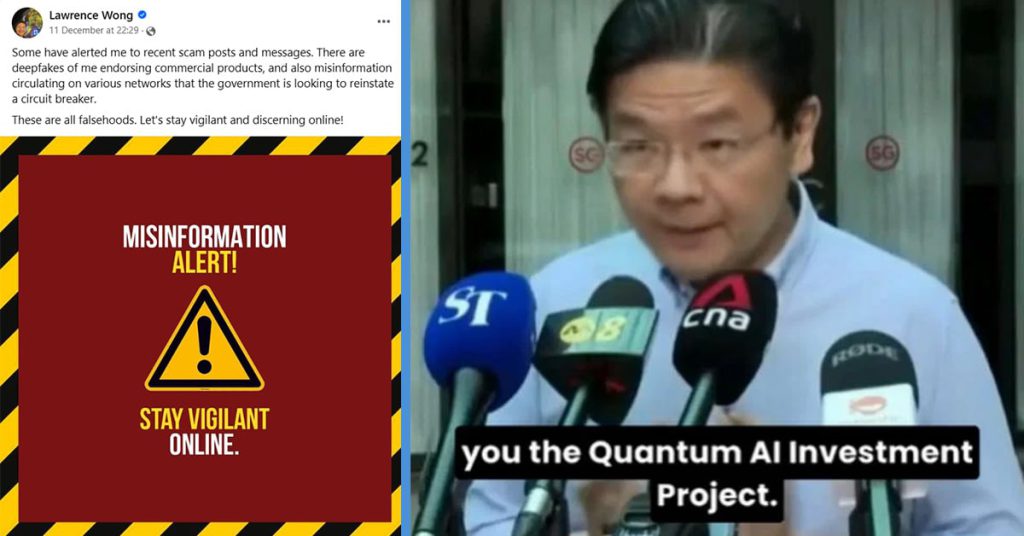Someone recently called me from a mobile number, pretending to be a bank that needed my PIN details to clear a ‘stuck’ transaction. A quick visit to ScamShield’s WhatsApp bot, and I found out that this was indeed a new scam number, so the more reports against it, the quicker it will be blocked.
The fact that we still receive phishing calls and messages shows that these dated methods still work. According to the Singapore Police Force, Singaporeans lost $651.8 million in 2023 to 46,563 recorded scam cases, a 46% increase from 2023.
Singapore Police Force Scam Report 2023
Wearesocial.com data on Singaporean social media trends shows that we spend an average of 2 hours a day interacting with social media and use an average 6.9 platforms per month. So while we scroll through TikTok, check our professional feed on LinkedIn or like an Instagram image, we are also exposing ourselves to internet scammers, who are now gathering our personal data to target us for scams.
Scammers are scamming smarter
It now seems that any social media exposure can attract scammers. They can quickly analyse your use patterns and target you with a scam tailored to your interest – like swimwear photos on Instagram, and you’ll soon get friend requests from attractive female profiles.
I’ve experienced a job scam call that referenced a registered business and used data from my LinkedIn profile, which meant that the scammer had a registered employer’s access to LinkendIn.
I nearly fell for this scam as well until the text reply told me to click on a Telegram link to arrange an ‘interview’—that set off my warning bells and sent me to check ScamShield.
The rise of AI deepfakes in scams
We’ve all heard about AI deepfakes, which are images, videos, and audio that AI software has digitally manipulated to misrepresent a public figure. For example, the deep fake videos of PM Lawrence Wong and Elon Musk promoting a fraudulent crypto exchange in Hong Kong.
With this recent media attention, the Singaporean public’s awareness of this type of cybercrime has heightened.
 Image: Goody Feed
Image: Goody Feed
The latest improvements to generative AI, however, have made it easier for scammers to create a digital imposter using voice cloning and a deep fake generator for images and video. They target regular people with online romance scams, fake ransom scams, fake celebrity nude images, and even a sophisticated video scam that used real-time AI overlays in a video meeting to fool a finance worker.
What you can do to protect yourself
We asked Shane Chiang, CEO of Cybersecurity firm Momentum Z, for his advice on how we can take to protect ourselves and our families. Shane pointed out that Deepfake scammers use a variety of platforms to deliver their scams to potential victims. “Understanding the threat, the types of actor/scammer, and the common techniques and tactics that they use will allow us to be more aware and better identify a scam,” said Shane.
“The key to protecting yourself is to always Be Aware and Check for the real source.”
Shane Chiang
“Be aware of the dangers of deepfakes, that they can be used to damage someone’s reputation, spread misinformation, or even interfere with elections,” said Shane. “You should be sceptical of anything you see online, especially if it seems too good to be true.”
“Singapore’s Prime Minister promoting a product that does not make sense in everyday context should raise your warning flags.”
Shane Chiang
Also, pay attention to the quality of the video and look for inconsistencies. “Deepfakes can sometimes be spotty or unnatural-looking, especially around the eyes and mouth; the person’s voice may not match their lip movements, or the lighting in the video may seem off.” Says Shane, “Check if the video came from a reliable source or a new TikTok account.”
“Try to verify any information with multiple sources. Don’t rely on a single video as proof of something. Follow up with a call, SMS, video call, or have a face-to-face meeting. Use social media platforms that have taken steps to combat deepfakes. Some platforms are using machine learning to detect deepfakes and remove them from their sites.”
“Limit the amount of personal information you share online, as the more information that is available about you, the easier it is for someone to create a deepfake of you.”
Shane Chiang
“We have to be careful about what photos and videos we share online, especially images or videos that we make public. Once you share something on the internet, it can be difficult to control how it is used.” Said Shane. “Also, use strong, unique passwords and enable two-factor authentication for your social media accounts. This will make it more difficult for someone to hack all your accounts, learn about your family and interests, and create a deepfake of you.”
Finally, be wary of text messages that redirect you to click on a link to download an app or video, or strangers who want to video call you. Always use reliable online app stores to download safe apps.
Singapore’s Anti-Scam Measures
ScamShield
Developed by Open Government Products, in collaboration with the Singapore Police Force and the National Crime Prevention Council, ScamShield is a smartphone App that blocks calls and messages from a directory of identified scam numbers. Users can also report new scam messages to help build the database.
Scamalert.sg
The National Crime Prevention Council offers a scam information site that includes the latest scam news, the top scam types of the past week, warning signs, real stories, and scam updates over its WhatsApp and Telegram channels.
A 9 a.m.- 5 p.m. weekday scam hotline is available at 1800-722-6688.
Scam.sg
Has collated information on scam news in Singapore, including information on companies operating in Singapore with trust scores, scam reports and other resources.
Telco advisories
Each telco has a scam advisory, with warnings and information on the latest scams relating to their business.
Singtel
M1
Starhub
Feature Image: Shutterstock





